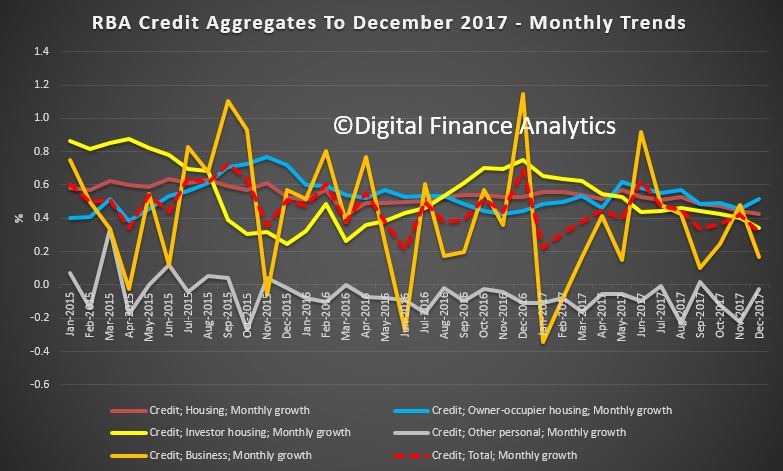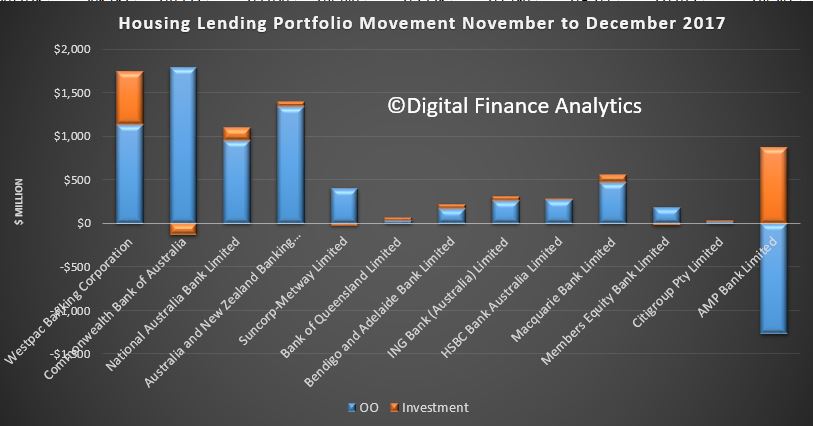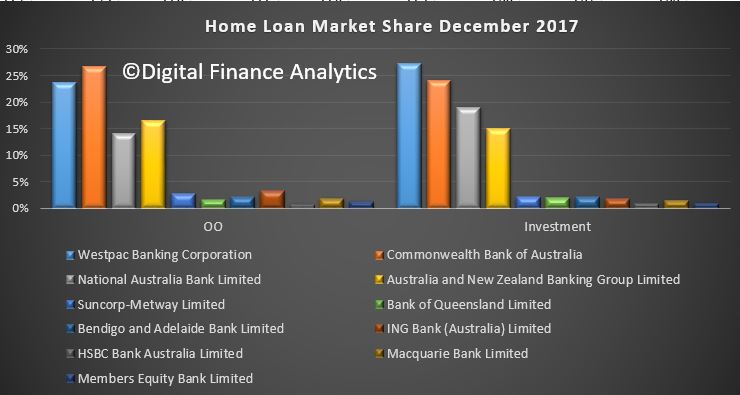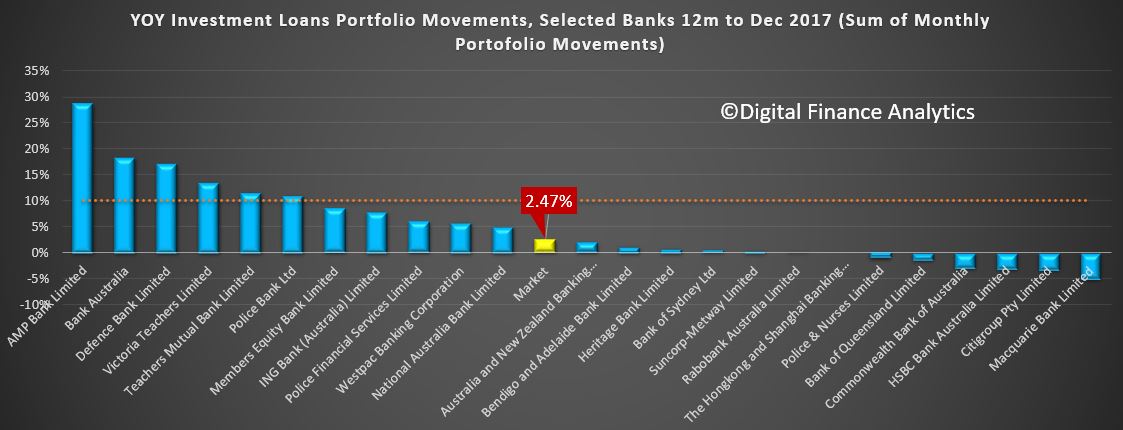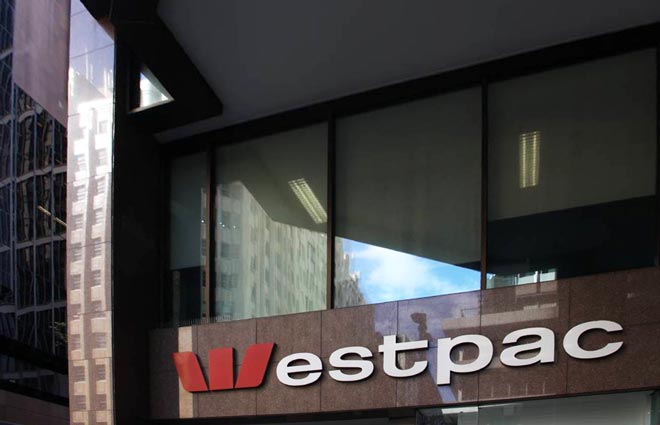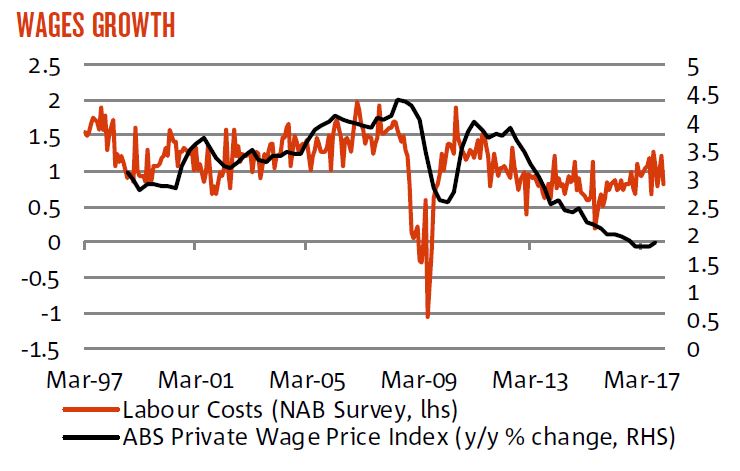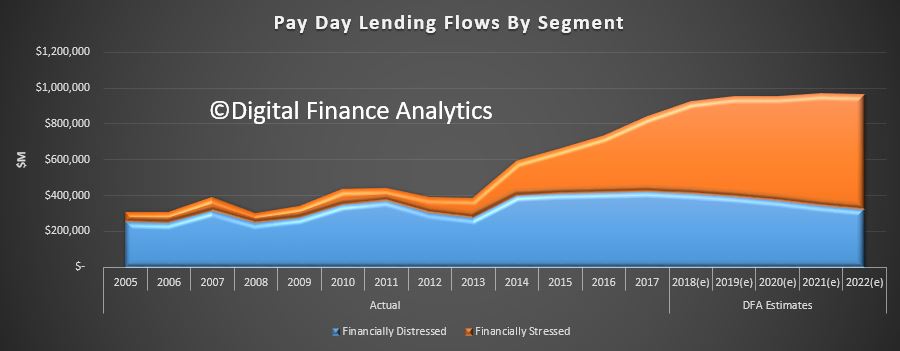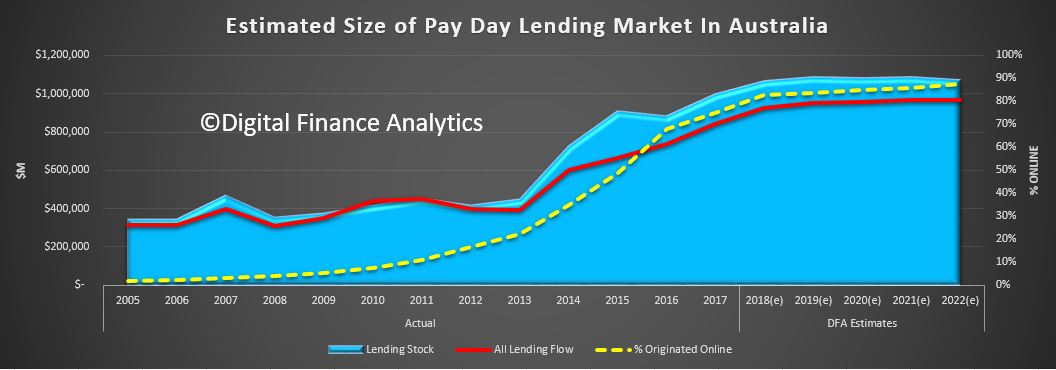Digital Finance Analytics has released the January 2018 mortgage stress and default analysis update. Across Australia, more than 924,000 households are estimated to be now in mortgage stress (last month 921,000). This equates to 29.8% of households. In addition, more than 20,000 of these are in severe stress, down 4,000 from last month.
 In this video we discuss the results, and count down the top 10 most stressed post codes this month.
In this video we discuss the results, and count down the top 10 most stressed post codes this month.
We estimate that more than 51,500 households risk 30-day default in the next 12 months, down 500 from last month. We expect bank portfolio losses to be around 2.7 basis points, though with losses in WA are likely to rise to 4.9 basis points. Some households have benefited from refinancing to cheaper owner occupied loans, giving them a little more wriggle room in terms of cash flow. The typical transaction has saved up to 45 basis points or $187 each month on a $500,000 repayment mortgage.
Martin North, Principal of Digital Finance Analytics said “the number of households impacted are economically significant, especially as household debt continues to climb to new record levels. Mortgage lending is still growing at three times income. This is not sustainable and we are expecting lending growth to moderate in the months ahead”. The latest household debt to income ratio is now at a record 199.7.[1]
Risks in the system continue to rise, and while recent strengthening of lending standards will help protect new borrowers, there are many households currently holding loans which would not now be approved. This is a significant sleeping problem and the risks in the system are higher than many recognise.
As a result, many Australian households are heavily indebted and large segments of the community and the nation are highly susceptible to future harm. With these settings, Gill North (a professor of law at Deakin University and joint principal of Digital Finance Analytics) “expects a significant escalation of legal actions against lenders during the next decade.”
National responsible lending regimes have operated in Australia since 2009, with the stated aims to encourage prudent lending, curtail undesirable market practices, and impose sanctions for irresponsible lending and leasing. These regimes require credit providers to ensure a loan is suitable for the borrower (or more precisely, that it is not unsuitable). When doing so, lenders must consider the ability of the consumer to repay the loan and must verify their financial capacity to meet the relevant commitments. The Australian Securities and Investments Commission (ASIC) is required to supervise and enforce these provisions and has various powers under the National Consumer Credit Protection Act 2009 (Cth). ASIC has already challenged some lenders regarding their lending practices. However, when external conditions in Australia deteriorate and or levels of financial stress and loan defaults rise acutely, a wave of responsible lending actions seems inevitable.
Our analysis uses the DFA core market model which combines information from our 52,000 household surveys, public data from the RBA, ABS and APRA; and private data from lenders and aggregators. The data is current to end January 2017. We analyse household cash flow based on real incomes, outgoings and mortgage repayments, rather than using an arbitrary 30% of income.
Households are defined as “stressed” when net income (or cash flow) does not cover ongoing costs. Households in mild stress have little leeway in their cash flows, whereas those in severe stress are unable to meet repayments from current income. In both cases, households manage this deficit by cutting back on spending, putting more on credit cards and seeking to refinance, restructure or sell their home. Those in severe stress are more likely to be seeking hardship assistance and are often forced to sell.
The forces which are lifting mortgage stress levels remain largely the same. In cash flow terms, we see households having to cope with rising living costs – notably child care, school fees and fuel – whilst real incomes continue to fall and underemployment remains high. Households have larger mortgages, thanks to the strong rise in home prices, especially in the main eastern state centres, but now prices are slipping. While mortgage rates remain quite low for owner occupied borrowers, those with interest only loans or investment loans have seen significant rises. We expect some upward pressure on real mortgage rates in the next year as international funding pressures mount, a potential for local rate rises and margin pressure on the banks.
Probability of default extends our mortgage stress analysis by overlaying economic indicators such as employment, future wage growth and cpi changes. Our Core Market Model also examines the potential of portfolio risk of loss in basis point and value terms. Losses are likely to be higher among more affluent households, contrary to the popular belief that affluent households are well protected.
 Regional analysis shows that NSW has 254,343 households in stress (258,572 last month), VIC 254,028 (254,485 last month), QLD 158,534 (156,097 last month) and WA 125,994 (121,934 last month). The probability of default rose, with around 9,800 in WA, around 9,500 in QLD, 13,000 in VIC and 14,000 in NSW.
Regional analysis shows that NSW has 254,343 households in stress (258,572 last month), VIC 254,028 (254,485 last month), QLD 158,534 (156,097 last month) and WA 125,994 (121,934 last month). The probability of default rose, with around 9,800 in WA, around 9,500 in QLD, 13,000 in VIC and 14,000 in NSW.
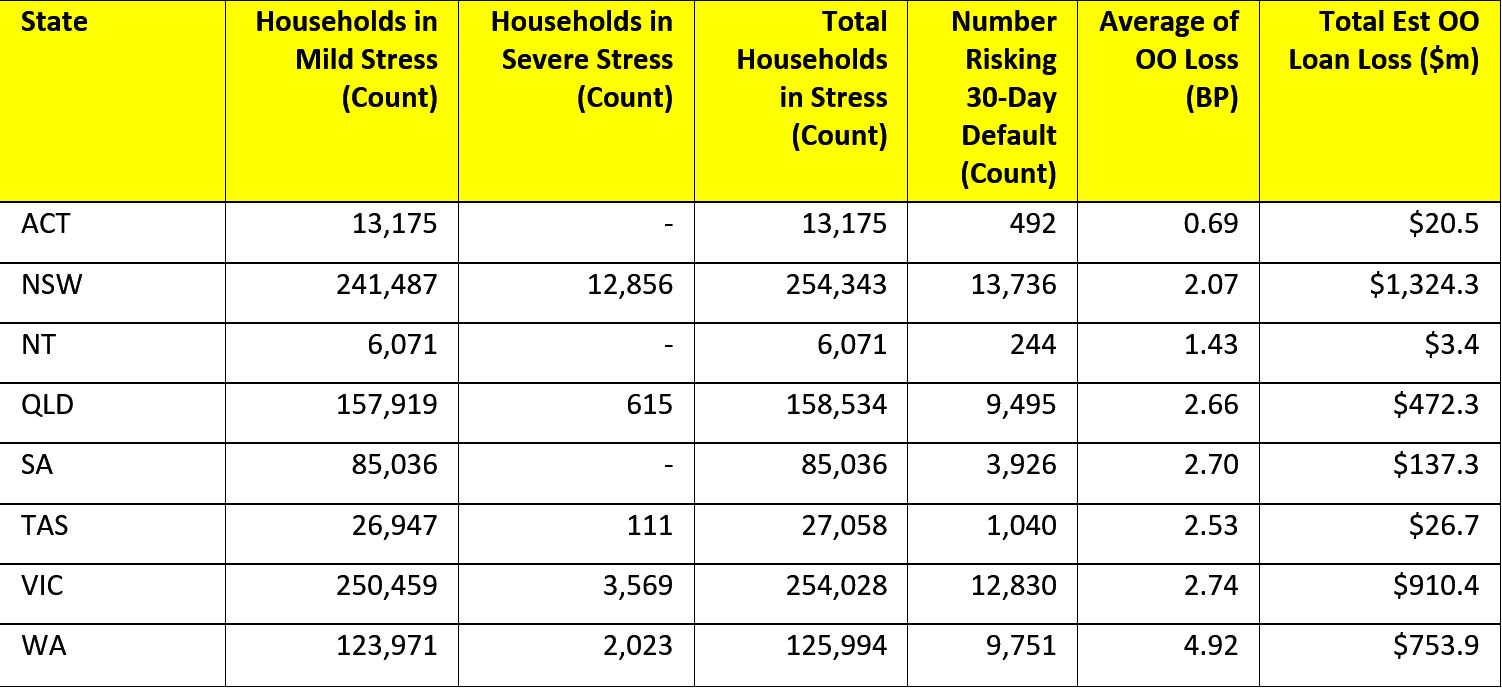 The largest financial losses relating to bank write-offs reside in NSW ($1.3 billion) from Owner Occupied borrowers) and VIC ($910 million) from Owner Occupied Borrowers, which equates to 2.07 and 2.74 basis points respectively. Losses are likely to be highest in WA at 4.9 basis points, which equates to $753 million from Owner Occupied borrowers.
The largest financial losses relating to bank write-offs reside in NSW ($1.3 billion) from Owner Occupied borrowers) and VIC ($910 million) from Owner Occupied Borrowers, which equates to 2.07 and 2.74 basis points respectively. Losses are likely to be highest in WA at 4.9 basis points, which equates to $753 million from Owner Occupied borrowers.
You can request our media release. Note this will NOT automatically send you our research updates, for that register here.
[contact-form to=’mnorth@digitalfinanceanalytics.com’ subject=’Request The January 2018 Stress Release’][contact-field label=’Name’ type=’name’ required=’1’/][contact-field label=’Email’ type=’email’ required=’1’/][contact-field label=’Email Me The January 2018 Media Release’ type=’radio’ required=’1′ options=’Yes Please’/][contact-field label=”Comment If You Like” type=”textarea”/][/contact-form]
Note that the detailed results from our surveys and analysis are made available to our paying clients.
[1] RBA E2 Household Finances – Selected Ratios September 2017
 The monthly data is very noisy as usual.
The monthly data is very noisy as usual. The data contains various health warnings:
The data contains various health warnings:
